How Proposify Grew From $0 to $8 Million ARR: Kyle Racki's Hard-Earned Lessons on Surviving the SaaS Rollercoaster
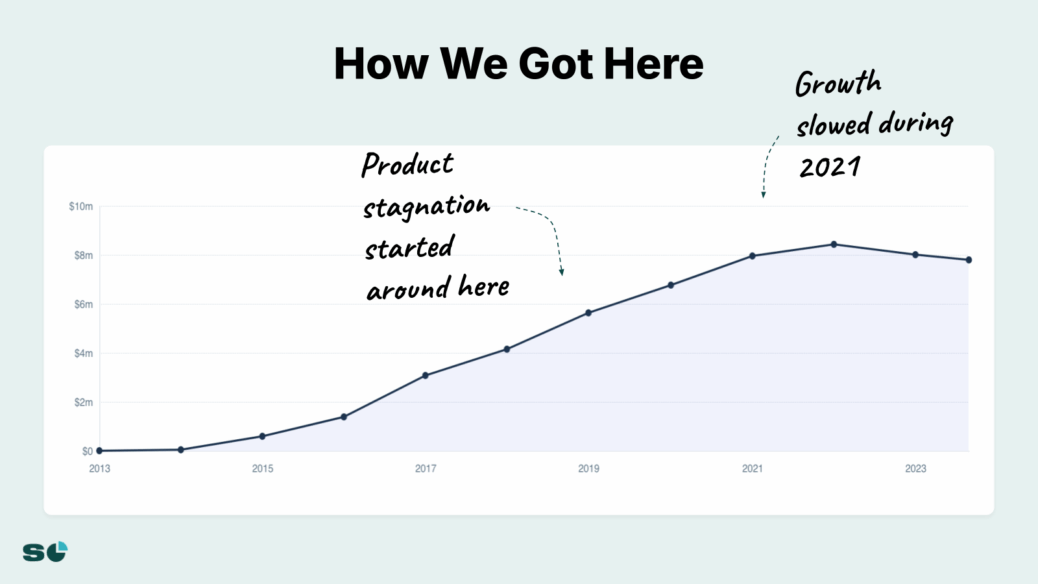
This article was written and sourced from Kyle Racki’s keynote presentation at Founderpath’s last event. The images embedded below are from their slide deck. The full keynote recording is here.
Kyle Racki built Proposify from zero to $8 million in annual recurring revenue, navigating through rapid growth, painful stagnation, and near-death experiences that would have killed most SaaS companies. In September 2024, Racki shared his raw and vulnerable story at SaaSOpen about how the company found product-market fit, scaled to nearly 100 employees, then almost lost everything when growth stalled and the market crashed in 2022.
The Playbook: Kyle Racki’s 5 Key Lessons from Building Proposify
1. Don’t Scale Headcount Before Product-Market Fit Evolves: Proposify grew to nearly 100 employees at just $5-6 million ARR after raising capital, burning $400,000 per month at their peak. The company had too many layers of management with some managers having only one or two reports – acting like a big company when they were still small.
2. Leaders Are Your Leverage: When your department isn’t functioning, holding onto the wrong leaders too long can be fatal. The right leader will show results within 90 days – they’ll “pick broken glass off the floor” and make immediate changes that prove they’re right for your business stage.
3. Position for Control, Not Beauty: After working with positioning expert April Dunford, Proposify discovered that mid-market customers didn’t care about beautiful proposals – they wanted control over sales materials and visibility into what’s being sent to prospects. This positioning shift made sales significantly easier.
4. Culture Debt Compounds Like Technical Debt: When companies aren’t winning and departments misalign, organizational debt builds. Proposify had to introduce new values focused on radical candor, performance, and accountability after realizing their overly positive culture had gotten used to losing.
5. SaaS is a Marathon, Not a Sprint: Many founders who hit $100 million ARR spent five years below $5 million in revenue. Instead of trying to fast exit or flip the company, Racki learned to embrace the long journey and became the company’s biggest cheerleader again after nearly selling in 2022.
2014: Proposify Launches Into Emerging Proposal Software Market
Proposify was co-founded in 2013 by Kyle Racki and Kevin Springer in Halifax, Nova Scotia, entering the nascent online proposal software space. The startup created a cloud-based service that mixes templates, design features and flexible customization to speed up the chore of sales, marketing and web design proposals.
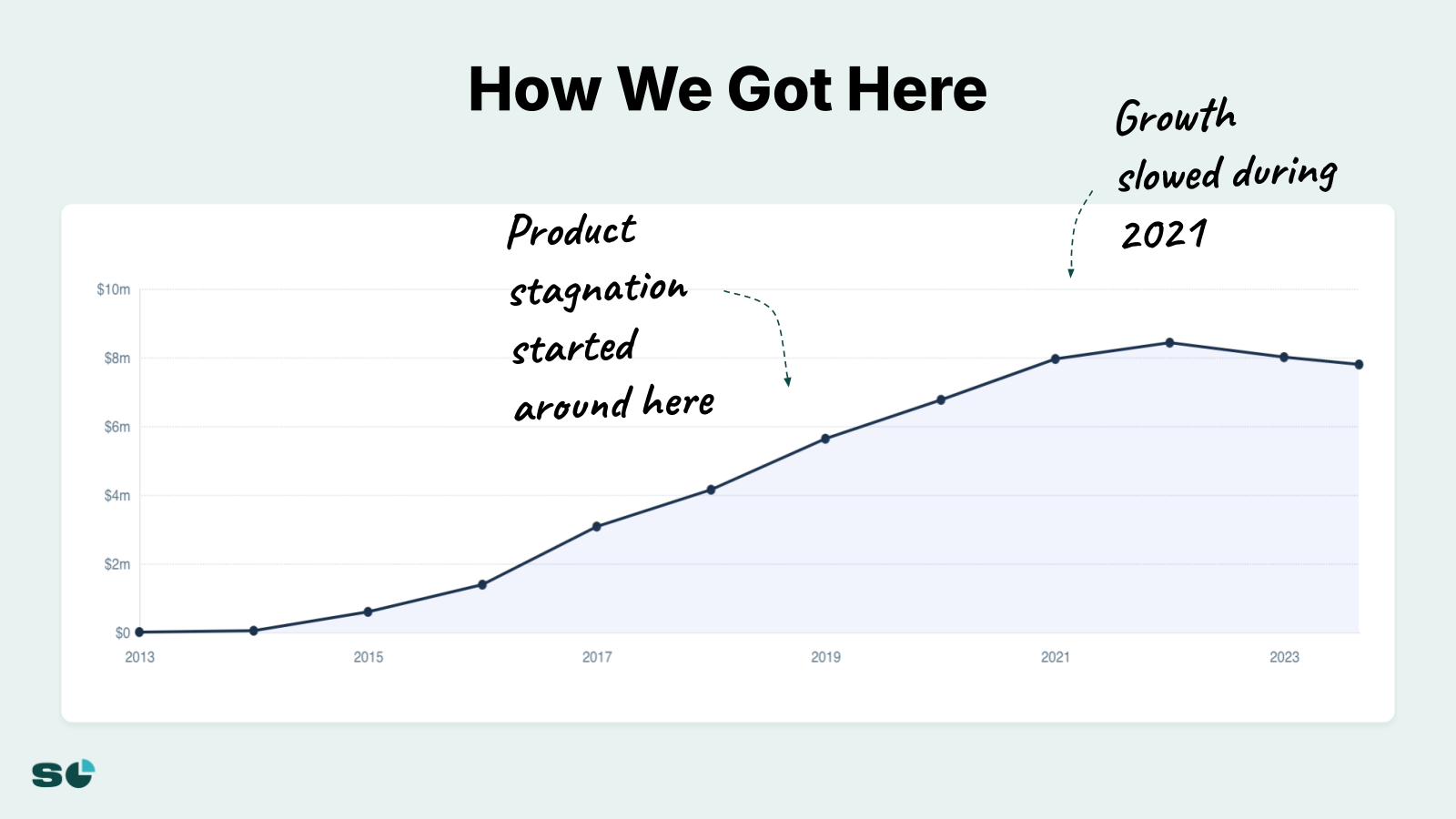
The company targeted digital marketing agencies initially, building a strong product-led growth motion with self-serve trials. Proposify differentiated itself by offering highly visual, interactive proposals with e-signatures – features that were relatively new in the SMB market at the time.
Racki faced enormous personal challenges during the early days, dealing with family shunning after leaving the Jehovah’s Witnesses religion while trying to sell his struggling digital agency and launch Proposify. A particularly low point came when Racki was driving across a bridge to Halifax and realized he didn’t have enough money to pay the toll, but he persevered with the belief that “the difference between success and failure is a matter of who gives up first”.
2014-2018: Finding Product-Market Fit Through Digital Agency Focus
After attending a demo camp in Boston, Proposify secured $250,000 in seed funding, and by September 2014, customer growth began doubling every month as the digital agency finally sold, freeing Racki and Springer to focus entirely on Proposify.
The early growth came from a laser focus on digital marketing agencies who needed professional proposals. The product solved real pain points around proposal creation, tracking, and signatures that agencies faced daily. This focus on organic SEO and word-of-mouth within the agency community drove consistent growth without massive marketing spend.
By 2016, Proposify had reached nearly 2,500 paying customers who had won close to $4 billion in business using the software, with revenue hitting an annual recurring rate above $1 million.
2018: Raised Capital and Started Dangerous Hypergrowth Phase
In 2018, Racki and his co-founder closed their first major investment round – each taking $1 million in secondaries while putting $3 million on the balance sheet. This capital injection marked a turning point, but not necessarily a positive one.
The company immediately fell into the classic trap of trying to grow too quickly after raising money. They expanded from a focused team to nearly 100 employees, adding layers of management and bureaucracy that slowed down product development. The engineering team got bogged down in technical debt, spending more time on maintenance than innovation.
By this time, Proposify had grown to $11 million in annual recurring revenue, but the cracks were starting to show. Product development stagnated, departments began pointing fingers, and the rate of growth started declining year after year.
How Proposify Cracked the Mid-Market: 3 Critical Shifts That Unlocked Six-Figure Deals
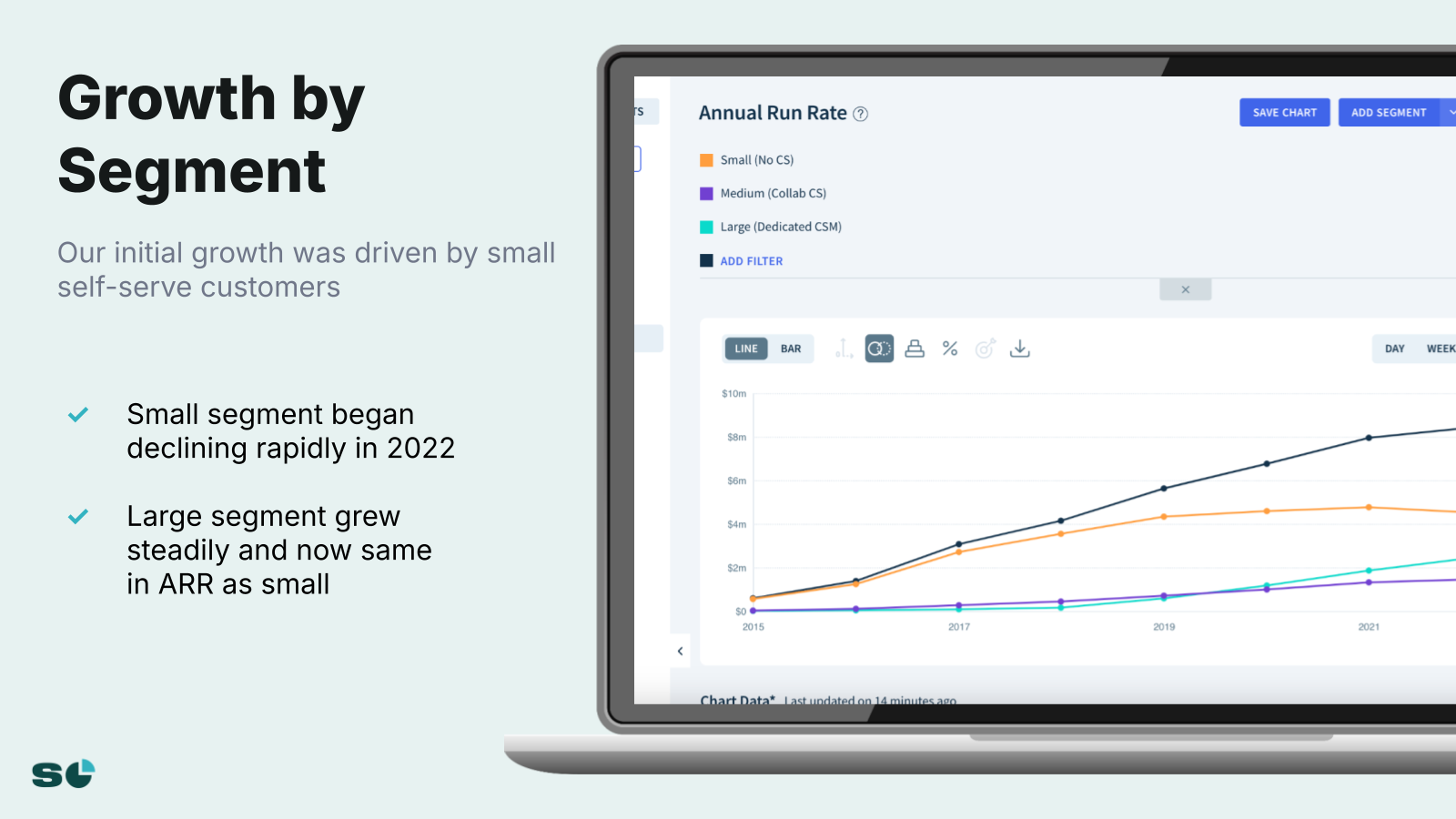
Proposify’s move upmarket required three fundamental changes that transformed their average contract value from $3,000 to deals in the six-figure range:
1. Product Maturity: The company had to build enterprise features from scratch. They added Salesforce integration, implemented SSO capabilities, and achieved SOC-2 compliance – table stakes for larger deals that took years to develop.
2. Positioning Around Control: Working with positioning expert April Dunford revealed that mid-market buyers didn’t want “beautiful proposals” – they wanted control over sales materials, visibility into prospect engagement, and protection against sales reps sending incorrect information. This insight completely changed their messaging.
3. Per-Seat Pricing Model: Moving from flat-rate pricing to per-seat pricing unlocked revenue expansion within accounts. Combined with dedicated customer success managers and professional services, this enabled Proposify to grow accounts over time rather than being capped at low ACVs.
The results were dramatic – the mid-market segment grew to match their small business revenue despite having far fewer customers, providing more stable and predictable revenue growth.
2022: The $400K/Month Burn Rate Crisis That Almost Killed Proposify
The 2022 SaaS market correction hit hard – tech layoffs surged with an estimated 93,000 U.S. tech workers laid off that year, more than doubling to 200,000 in 2023. Proposify wasn’t immune to these market forces.
By 2021, Proposify was burning $400,000 per month despite being under $10 million ARR. The company had grown to around 100 employees, but product velocity had ground to a halt. Engineers spent their time on maintenance rather than innovation, and every department was frustrated with the pace of progress.
When CFO Cathy looked at the numbers, she delivered a stark warning: “You’re running off a cliff – you’ll be dead in nine months if you don’t change something.” This led to one of Racki’s toughest decisions – laying off 25% of the staff in January 2022.
Meanwhile, Racki had been trying to sell the company through an M&A process with strategics and PE firms lined up. But when the acquisition market crashed in 2022, every potential buyer pulled out without a single LOI. Racki found himself stuck with a struggling business he’d mentally checked out of, forcing him to confront the reality that the only path forward was to fix the company himself.
2023: From Burning Millions to Profitable – The Turnaround Begins
The layoffs and market reality check sparked a complete transformation at Proposify. In 2023, the company went from burning millions to achieving profitability with $58,000 in profit – not much, but enough to survive indefinitely without raising more capital.
The cultural transformation was equally important. Proposify introduced new core values centered on radical candor, tough conversations, and accountability. They adopted a “build the plane while flying it” mentality, forcing engineers to find the shortest path to value rather than over-engineering solutions.
But the real breakthrough came when Racki discovered Matthew, a developer from Quebec who could ship in a week what others claimed would take months due to technical debt. Matthew’s approach to just “getting it done” revealed what had been missing – the right engineering leadership.
2024: The Engineering Leader Who Changed Everything
Matthew introduced Racki to Mark Lachapelle, another French Canadian engineer who had worked at scale but also understood startups. Within 90 days of joining as VP of Engineering, Mark transformed the engineering culture with two key principles:
Shortest Path to Value: Engineers stopped trying to build perfect solutions and instead focused on solving customer problems quickly, then iterating. This mindset shift was simple to say but incredibly difficult to implement across an entire engineering team.
Technical Vision with Pragmatism: While addressing technical debt, Mark didn’t stop feature development. He introduced microservices and event-driven architecture gradually, finding opportunities to modernize while still shipping value to customers. As a result of utilizing webinars and other educational content, the engineering team better understood these architectural changes.
A month before Racki’s keynote, Proposify launched version 3 beta – a complete front-end rebuild that addressed years of product stability and usability issues. While the company remained flat in 2024 at around $8 million ARR, the foundation was finally solid again.
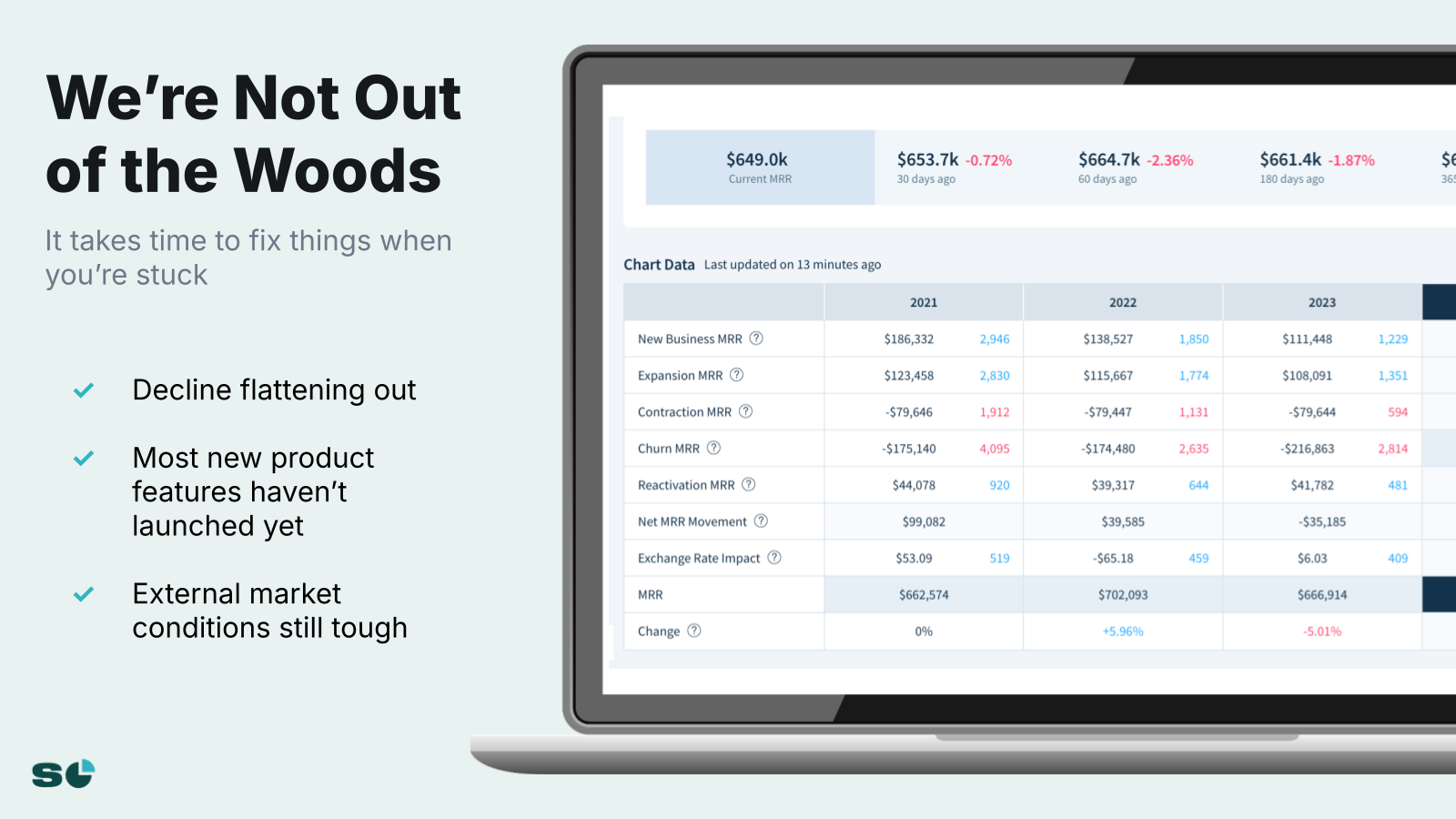
The Competitive Reality: Why Product Still Matters in SaaS
Proposify operates in an intensely competitive proposal software market against well-funded competitors like PandaDoc, Better Proposals, Qwilr, and others. While competitors like PandaDoc position themselves as end-to-end document management platforms, Proposify has maintained its focus on being the best proposal software specifically for sales teams.
Racki strongly disagrees with the notion that “product is easy now” or that “AI can write your product.” His hard-learned lesson: You cannot out-market or out-sell a weak or mediocre product, especially in competitive markets where others are innovating rapidly. The product stagnation from 2019-2023 nearly killed the company, proving that in SaaS, you’re fundamentally in the product business.
The company’s renewed focus on product innovation and engineering excellence positions them to compete more effectively, even if growth hasn’t immediately returned to previous highs.
The Bottom Line: Proposify’s Path from $8M to $100M ARR
Kyle Racki’s journey with Proposify offers brutal honesty about the realities of building a SaaS company. After reaching $8 million ARR, the company faced existential challenges that would have killed most startups – but they survived by making hard decisions about people, product, and culture.
The key lessons from Proposify’s journey apply to any SaaS founder: solve for your biggest constraint even when it feels impossible, recognize that leaders are your leverage and make changes quickly when they’re not working, and remember that SaaS success is measured in decades, not quarters.
Today, Proposify has a bigger vision than ever before. With the right engineering leadership, a reformed culture, and a CEO who’s fully engaged again, the company believes it can reach $100 million ARR. The path won’t be quick – they’re still flat at $8 million – but they’ve built the foundation to compete and win in their market.
For founders currently stuck in the $5-10 million ARR range, Proposify’s story offers hope: even when you’re burning too much, growing too slowly, and facing market headwinds, the right changes in leadership, culture, and product focus can reignite growth. Sometimes the best thing that can happen is having all your escape hatches close, forcing you to build the business you always should have built. Watch the full keynote presentation from Kyle Racki to dive deeper into these hard-earned lessons.
If you’re an ambitious founder looking for capital to grow, we’d love to consider funding you at Founderpath. Click here to request capital.
Recent Articles
Top Growth Frameworks for Founders in 2025
The Ultimate Guide to Startup Growth Frameworks (With Real Founder Examples) Most founders think about growth in terms of tactics:…
Founderpath Frequently Asked Questions
What types of funding products does Founderpath offer? We currently offer two main products for B2B SaaS founders: Revenue-based financing:…
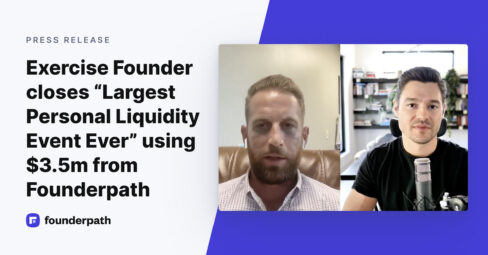
Founder Bootstrapped Using $3.5m From Founderpath, Exited for Massive Amount Last Week
Last week, Joel sold his bootstrapped software company. It was the biggest personal liquidity event of his career. Why? Because…